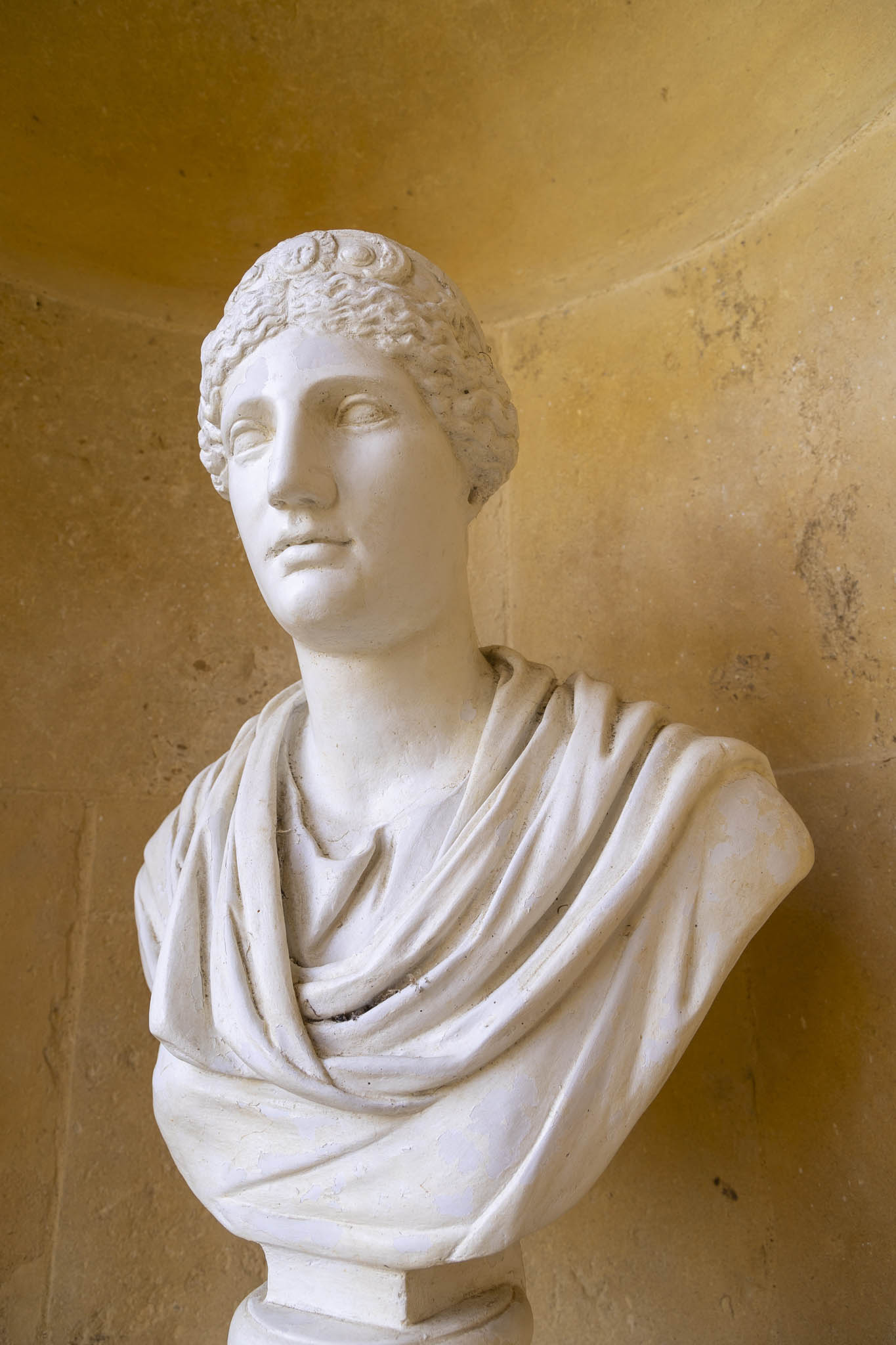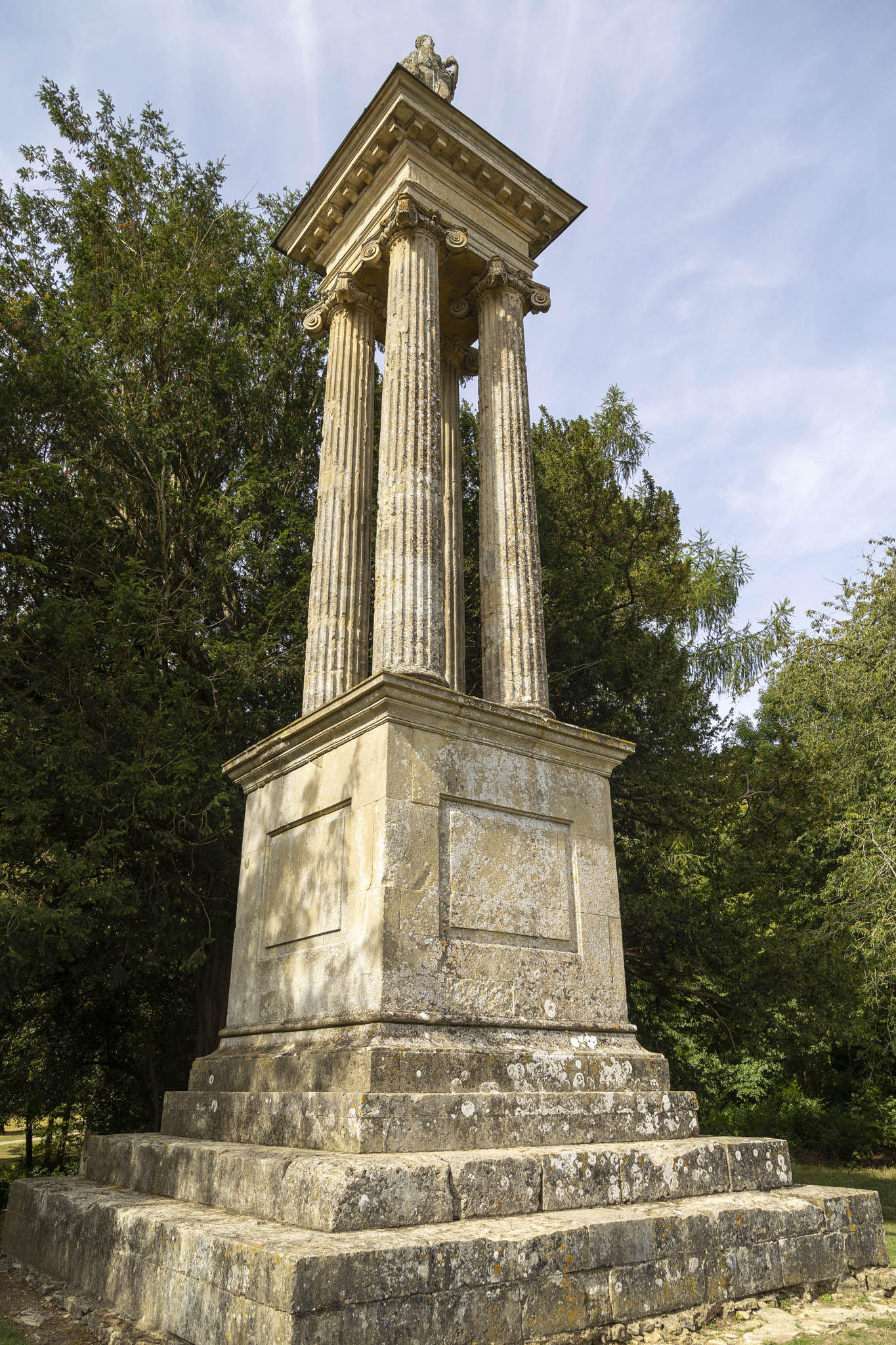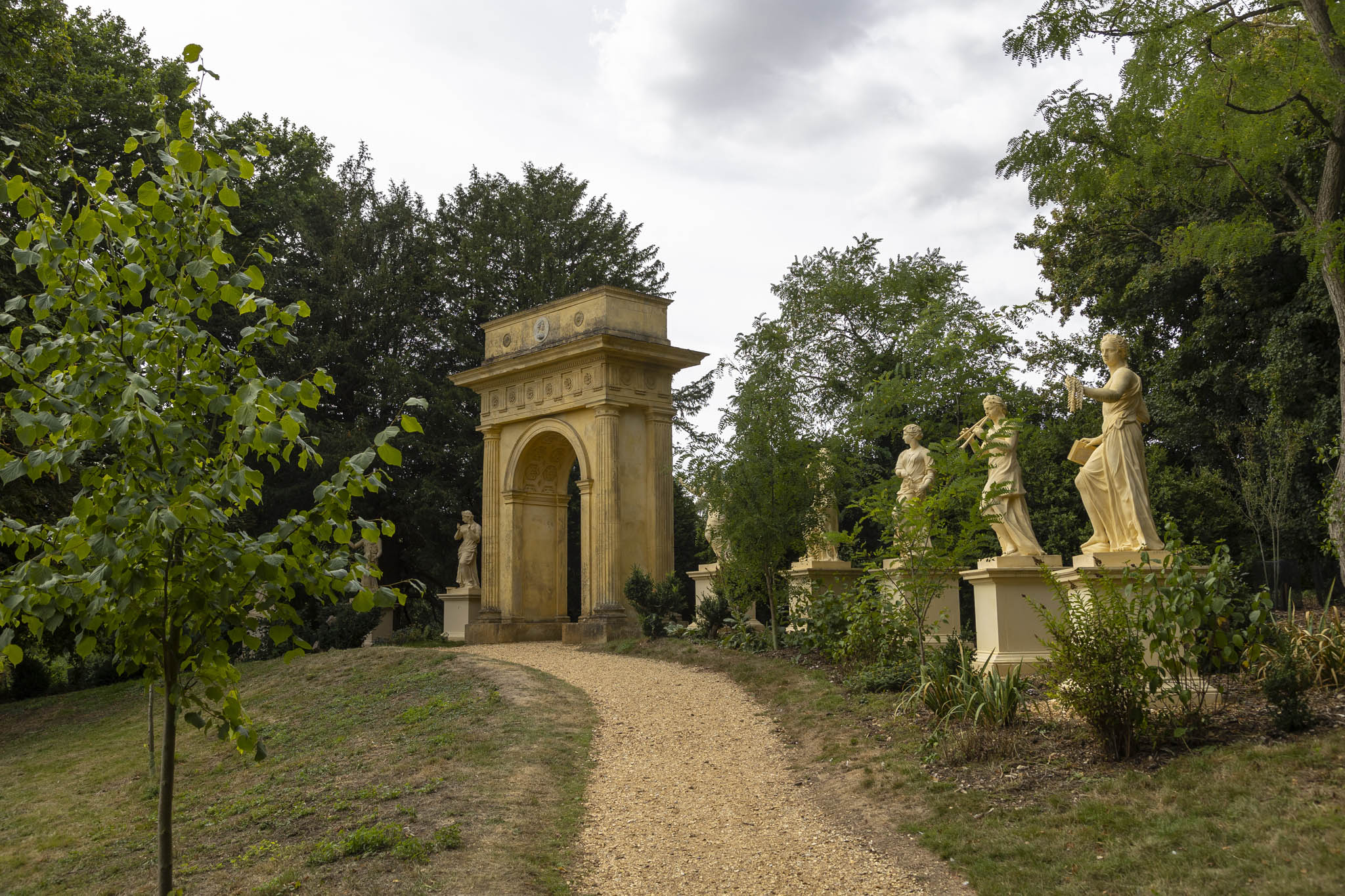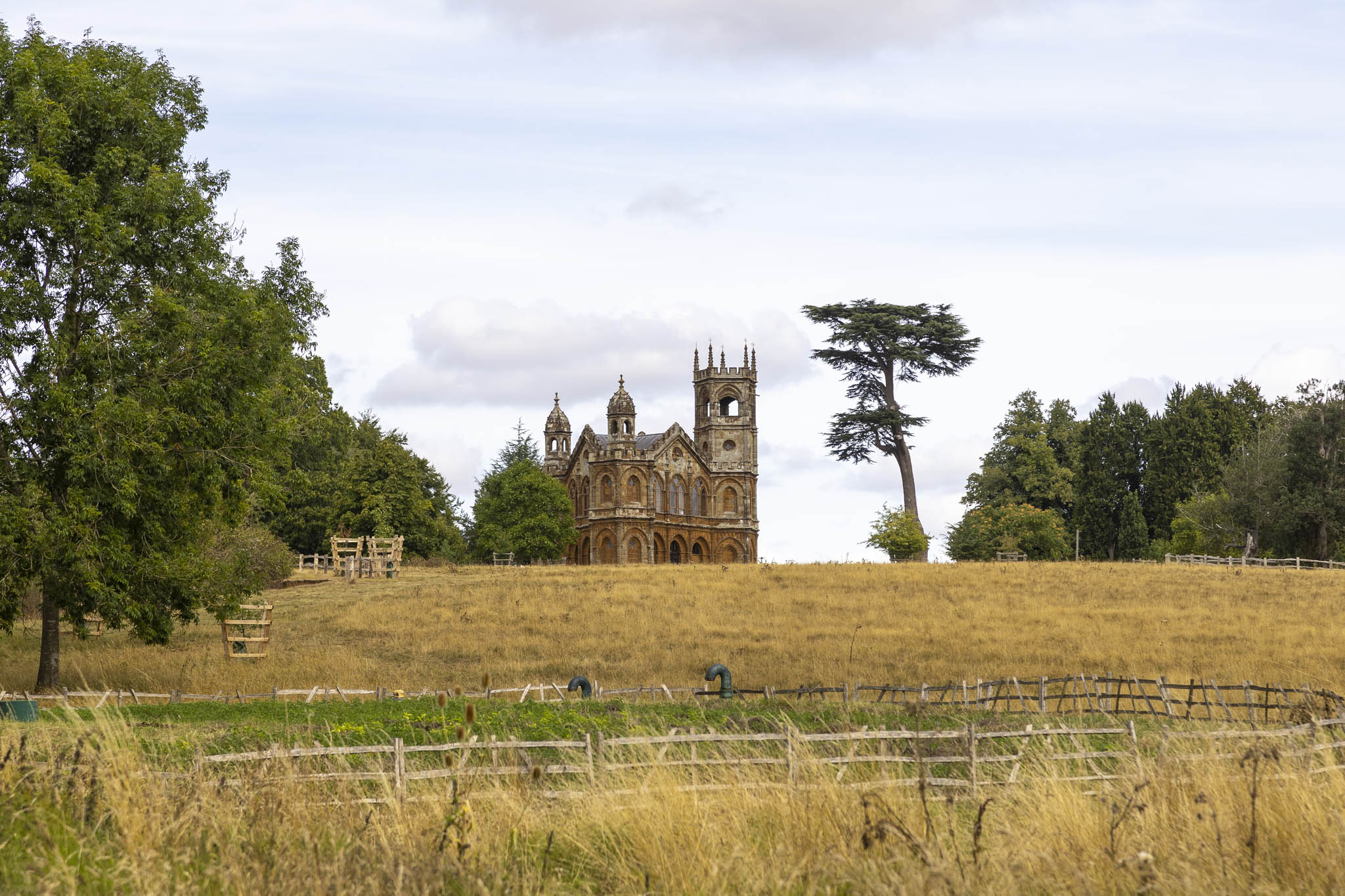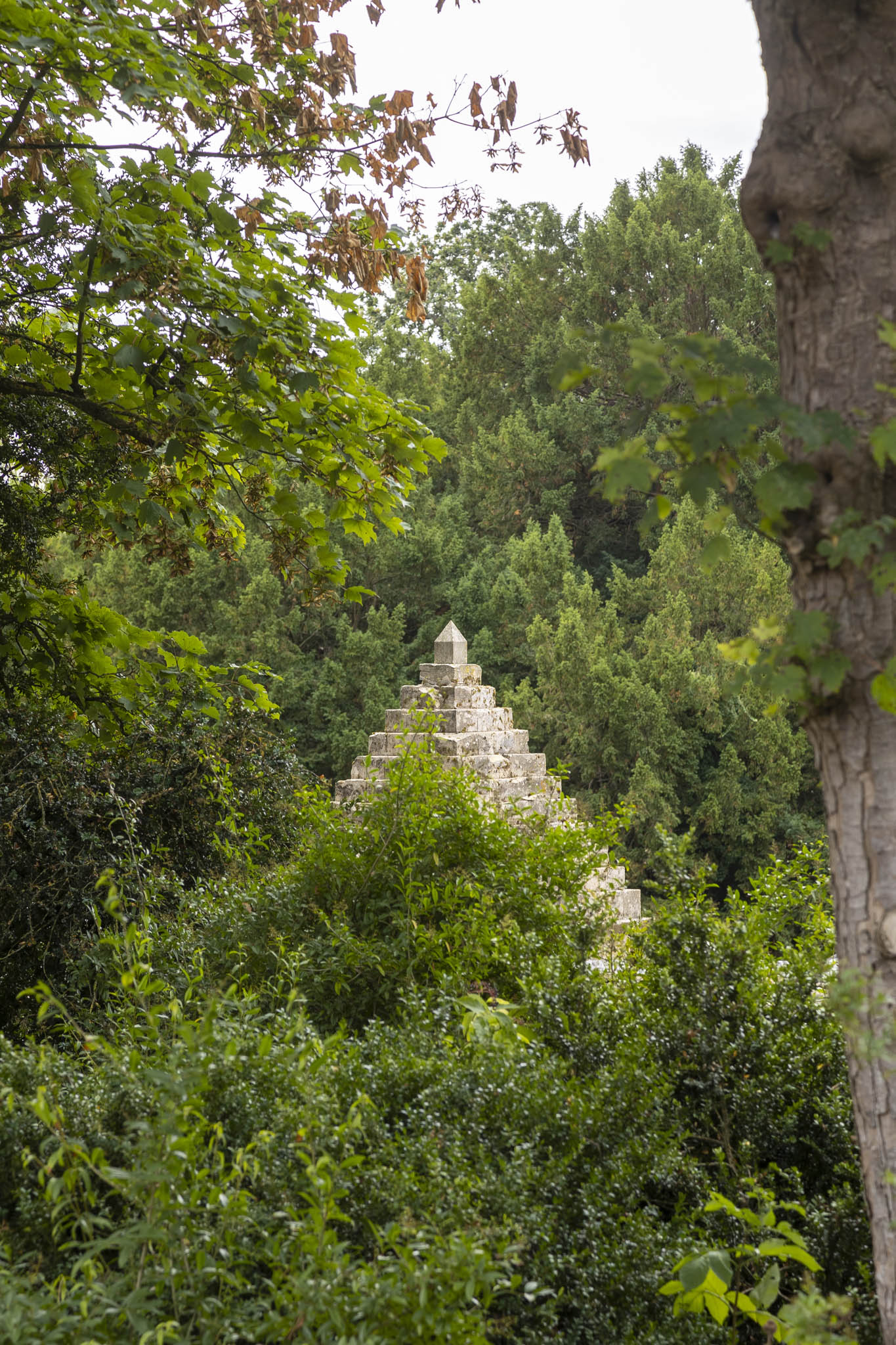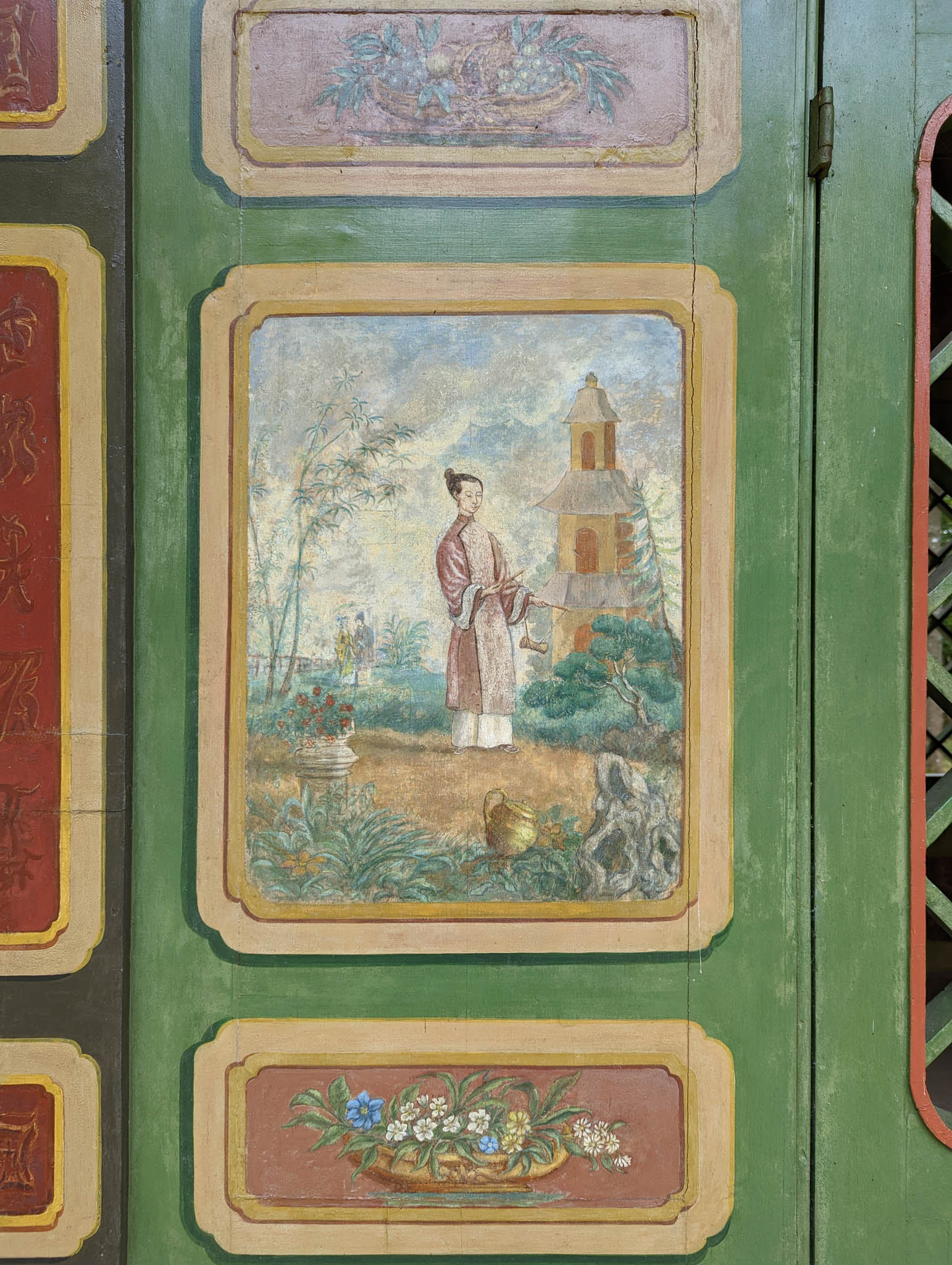Temples play a very large part of the visual experience when walking the gardens and sprawling landscape at Stowe.
The land was purchased in the sixteenth century by a wealthy wool farmer, John Temple. By the turn of the eighteenth century the house and surrounding land and gardens had been properly designed, built, and expanded upon, and in these gardens were placed a large number of monuments, including a not insignificant number of temples, believed to be a humorous take on the family motto which translates to “How beautiful are the temples.”
During our visit to Stowe we roughly walked a circular route in a clockwise direction around the lake you see below with a visit inside Stowe House when we reached that. This post will contain a small selection of photos of Stowe Gardens to show off how attractive the place is. They’re better experienced in person, but that’s true of most things, of course.
The Gothic Temple dates from the middle of the eighteenth century and could be seen from a number of spots on the walk. We didn’t actually get up to it as we’d started to head away from it at the end before realising it was far enough away and up enough of a slope that I didn’t want to turn back and incur the wrath of my wife whose feet were already aching by that point. The temple is notable for the colour of the material used to build it; high amounts of iron were present in the stone chosen as opposed to the paler limestone used almost exclusively everywhere else on the property.
The Temple of Venus owes its design inspiration to the Italian Renaissance architect, Palladio, although the architect involved, William Kent, was British and responsible for several works at Stowe. It wouldn’t be the only Palladian architecture to be seen, either.
We spotted a small clearing in a wooded area and went to explore and that’s when we happened upon a swing. We’d arrived at Stowe quite early so we were the only ones around and decided we’d take turns on the swing, being the great big kids that we are. Genuinely a lot of fun. By the time we were about finished a few other people had suddenly turned up and we could tell they were waiting for us to leave so they could have a go too.
Some people may be aware that we’re fans of architecture. We’d never claim to be experts and our appreciation for designs and styles is largely simply that. The history, key figures, dates, the names of specific elements of architecture… yeah, don’t ask us questions about those things. We know what we like, we know perhaps a little more than the average bloke in the street, but it is just a very amateur sense of liking things and picking up the odd fact here and there. One thing I like, for instance, when spotting either Roman or Greek columns or homages to them, as you’d find in Stowe, is identifying what classical order they belong to, and if I’m hitting a stately home I like to see whether the style is consistent. Yes, I’m weird, what of it? You can see in the pictures of the Statue of Queen Caroline and the Rotondo below that while the columns are styled in different ways (fluted and unfluted), the capitals are both Ionic (the scroll-like swirls). This was the prevailing style at Stowe, but it wasn’t the only one, though.
The Grenville Column was notable for how different it looked to everything else, but we knew we’d seen something like it before. We couldn’t remember at the time, but upon discovering that it was an example of a rostral column, we realised that we’d seen a colourful pair years before when we’d visited Vasilyevsky Island, Saint Petersburg, Russia. This one was dedicated to a family member, Thomas Grenville, killed in action in 1747 aboard HMS Defiance.
The Shell Bridge is named for its shell decorations but it’s not actually a bridge at all. Rather, it’s a dam for the lake, and simply designed to look like a bridge.
At Stowe we saw another piece of architecture inspired by Palladio: one of the three near-identical Palladian Bridges in the UK. We had earlier in the year seen the first of those to be built, at Wilton House, Wiltshire, with this structure in Stowe following on a couple of years later in 1738.
Also built in 1738, making it the oldest example of its kind in England, the Chinese House was originally mounted on stilts, has been moved several times, but was purchased from its owners in Kildare by the National Trust in 1996 and returned to its original position. The design spurred a trend in landscape gardening for Chinese-inspired works at the time.
The final building we passed before finding ourselves back at the entrance to Stowe and a short walk from our car was the Temple of Friendship. Its partly ruined state is the result of an 1840 fire but it was interesting to me to see the simpler columns here. Whether you’d consider them Doric because of the capitals or Tuscan because the columns are also unfluted, is a matter of debate. As I mentioned before: it’s a very amateur interest in architecture I’ve got so I’m not the person with whom to have that debate.
Stowe was absolutely lovely to walk around, and the house was great to visit too. If you like architecture, sculptures, lakes, or just the idea of a lovely long walk through beautiful landscape then it’s well worth a visit.




